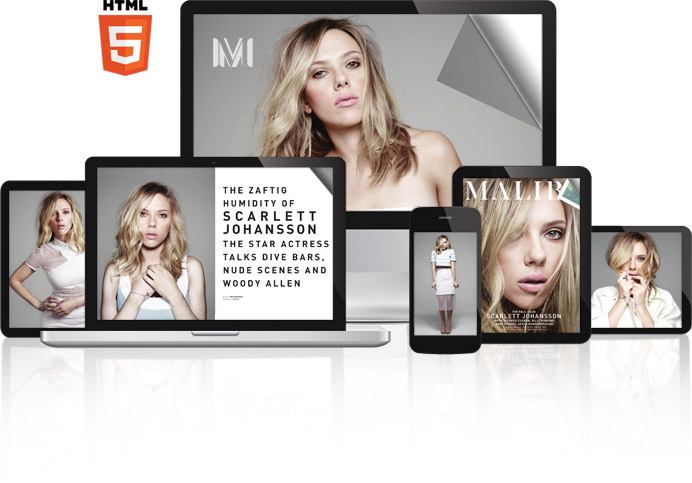Not all responsive digital publishing software is created equal. Whether you’re a publisher, content marketer, or communications director striving to transform static content into immersive online experiences, evaluating the right platform is critical for both workflow efficiency and reader engagement. At 3D Issue, we’ve spent years working closely with publishers to understand which features actually move the needle for their success.
Here’s our unique, no-nonsense framework to cut through the noise and truly evaluate responsive digital publishing software—emphasising features that don’t just sound good, but directly contribute to digital publishing mastery.
1. True Multi-Device Responsiveness

In terms of magazine representation as a product, fixed layout FlipBooks are a fantastic tool for showcasing the magazine to potential advertisers or customers outside the standard distribution network but in today’s world, more than half of all digital content is consumed on mobile devices. Put simply scaling a PDF is not enough. You want a solution that adapts layouts, navigation, and interactivity for every screen size.
- Mobile-First Design: The best software lets you create publications that naturally fit any device, from large desktops to small smartphones, ensuring zero content distortion.
- Real-Time Preview: Look for platforms—like Experios—that offer real-time previews for every device as you design, so there are no surprises after publishing.
- Interaction Adaptation: Interactive elements such as video, galleries, or forms should function identically whether a reader taps, swipes, or clicks.
2. AI Powered Content Creation

AI tools such as text and image generation are becoming essential components of responsive digital publishing. They enable content creators to rapidly generate high-quality, tailored content that meets the diverse needs of audiences across platforms and devices. Whether it’s drafting product descriptions, blog posts, or visual assets, AI significantly reduces production time and cost while maintaining consistency and brand voice. This empowers publishers to focus more on strategy, creativity, and user engagement rather than repetitive tasks.
Moreover, AI-generated content enhances personalisation and accessibility. Text generation tools can produce dynamic, user-specific content at scale, while image generation tools allow for visual consistency across various screen sizes and formats. For users with disabilities, AI can be integrated to create alternative text, audio descriptions, and responsive layouts that adhere to accessibility standards. In a fast-moving digital landscape, the use of AI not only boosts productivity but also ensures content remains adaptive, inclusive, and relevant.
AI tools such as text and image generation offer significant cost-saving benefits for digital publishers—benefits that are especially important in an industry where content production must be high-quality, fast, and scalable. Traditionally, licensing a single stock photo for commercial use can cost anywhere from €10 to €300 depending on usage rights and resolution. Multiply that across dozens or hundreds of images for a campaign or publication, and the expense becomes substantial. AI image generation, on the other hand, allows publishers to create unique visuals tailored to their needs at a fraction of the cost—often with unlimited use rights.
Similarly, professional copywriting services typically charge between €0.10 and €0.50 per word, depending on the complexity and expertise required. A 1,000-word article could easily cost €100–€500. AI text generation tools enable publishers to generate first drafts or even full articles in seconds, dramatically cutting down on freelance writing costs. While human editing is still valuable, the initial content generation process becomes much more efficient and economical. These tools don’t just speed up workflows—they help organisations stretch their content budgets further, enabling them to produce more with less.
3. Accessibility & Compliance as Standard

Digital inclusion isn’t optional. Publishers must deliver content experiences that are accessible for everyone—particularly with evolving legal standards like WCAG and ADA.
- Built-In Accessibility Tools: Ensure your software provides automatic accessibility checks and validation—flagging issues for headings, alt-texts, color contrast, and tab order. This isn’t just compliance, it’s also good business sense.
- Customizable UI for Impaired Users: Look for features such as font size adjustment, high-contrast themes, and navigation suited for screen readers.
- One-Click Accessibility Reports: The ability to generate a compliance report after every publish will give you peace of mind and facilitate organizational transparency.
4. Analytics and Lead Generation Integration
If you can’t measure it, you can’t improve it. Beyond simple stats, you need deep, actionable insights directly from your publications.
- Integrated, Customizable Dashboard: You should be able to view key metrics—time spent, device breakdown, drop-off points—without IT intervention.
- Tag-Based Heatmaps: Tag rich media components (videos, forms, calls-to-action) to see exactly what’s performing—and what isn’t.
- Lead Capture Built-In: Embed forms within digital magazines to convert engaged readers into solid leads. Make sure the platform integrates naturally with CRM and email marketing systems.

5. Flexible Hosting, Security & SEO Controls
Your digital content is an asset—control and visibility matter. Evaluate hosting choices, SEO management, and built-in security features, so your brand and audience stay protected.
- Flexible Hosting Options: Some platforms (like Experios) allow you to choose between their managed cloud and self-hosting—so you stay in control of branding, privacy, and data residency.
- SEO Optimization: Ensure your publications have customizable meta tags, sitemaps, and semantic HTML. Responsive publications naturally rank higher in search results.
- Security & Privacy: Look for secure distribution options, password-protected access, and adherence to data privacy best practices.

Your Step-by-Step Evaluation Checklist
- Test the cross-device output: Review a publication on desktop, tablet, and multiple phone sizes. Do images, buttons, and navigation adapt intuitively?
- Audit for accessibility: Run a sample project through the built-in validator. How easy is it to address flagged issues?
- Try the analytics dashboard: Does it give you actionable insight, or simply vanity metrics?
- Assess collaboration: Can multiple team members work on projects simultaneously—copy editors, designers, and marketers?
- Review publishing speed: Go from a PDF or a blank page to a live, responsive publication. Was it a matter of minutes or days?
Bonus: Questions to Ask Your Vendor
- What’s your feature release cadence—and can I see your roadmap?
- Do you offer onboarding and 1-to-1 support for both editorial and technical teams?
- Can I white-label my publications to match my brand identity?
- Do you provide APIs for automation or custom integration needs?
Final Thoughts
Choosing responsive digital publishing software isn’t about ticking boxes—it decides the flexibility, speed, and inclusivity of your entire content operation for years to come. The 3D Issue team has helped some of the world’s largest publishers and content-driven brands double their readership and slash production costs, by focusing on these mission-critical features.
If you want a platform designed for real publishers—responsive, accessible, analytics-driven, and blazingly fast—discover what Experios can do for you. Try it for free and see how effortless high-impact digital publishing can be.







